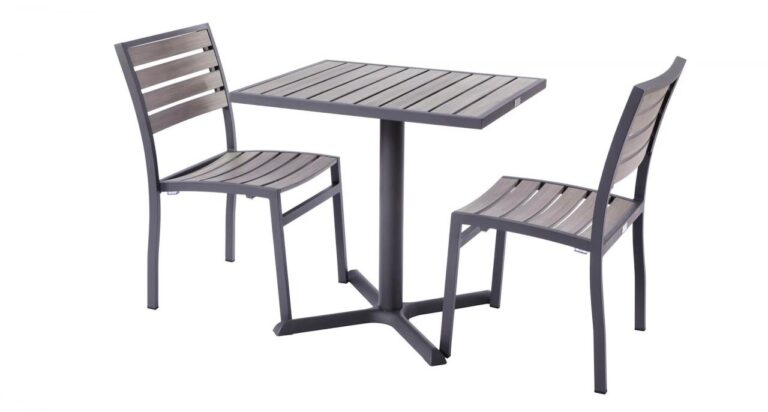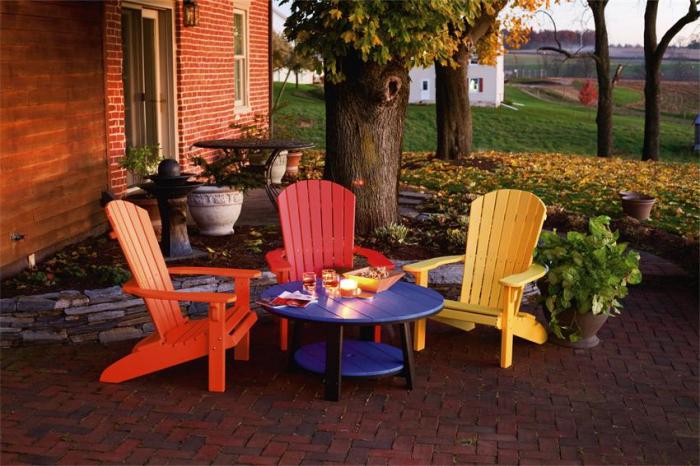Commercial Outdoor Furniture Sets A Comprehensive Guide
Commercial outdoor furniture sets are transforming outdoor spaces into inviting and functional areas for businesses. From restaurants and cafes to hotels and parks, these durable and stylish sets create a welcoming ambiance for customers and staff alike. This guide delves into the world of commercial outdoor furniture, exploring different types, materials, designs, and crucial considerations for purchasing.
This guide covers a broad range of topics including the various types of commercial outdoor furniture sets available, the key materials used in their construction, design considerations, maintenance strategies, and practical applications. It also includes tables for comparing and contrasting different aspects of residential and commercial furniture, helping you make informed choices.
Overview of Commercial Outdoor Furniture Sets
Commercial outdoor furniture sets are designed for high-traffic areas and prolonged use, unlike residential pieces. These sets are built to withstand harsh weather conditions, frequent cleaning, and a greater number of users. Their durability and robust construction are paramount, often exceeding the standards of typical residential furniture.
These sets are meticulously crafted to stand up to the rigors of public spaces, parks, restaurants, and other commercial settings. Key differentiators include heavy-duty materials, superior construction techniques, and a focus on longevity and resilience. This emphasis on strength and weather resistance sets them apart from the more casual and less durable options found in residential settings.
Defining Commercial Outdoor Furniture Sets
Commercial outdoor furniture sets are specifically engineered for public use. They are designed to endure high-use scenarios, severe weather, and frequent cleaning, often requiring more substantial construction and materials than their residential counterparts. This difference in design and construction is crucial for maintaining a consistent appearance and functionality over time.
Key Characteristics of Commercial Outdoor Furniture Sets
Commercial outdoor furniture sets are characterized by their durability, resilience, and often, a more substantial build. These characteristics are crucial for withstanding the rigors of public use and the elements. They are generally more resistant to fading, weathering, and damage compared to residential sets. Often, commercial pieces utilize high-quality, weather-resistant materials and have reinforced joints and connections.
Materials Commonly Used
The construction of commercial outdoor furniture sets commonly utilizes a variety of materials, each contributing to its durability and aesthetic appeal. These include:
- Aluminum: Lightweight, yet strong, aluminum frames are prevalent. Their resistance to rust and corrosion makes them ideal for outdoor use. Aluminum frames often come in powder-coated finishes for added protection and aesthetic options.
- Steel: Steel frames, often powder-coated, offer a robust structure. The strength of steel is essential in supporting heavier weights and ensuring longevity in commercial settings.
- Wicker or Rattan: These materials, often synthetic, provide a stylish aesthetic and are relatively weather-resistant. The woven nature of these materials creates visual appeal, but synthetic varieties are crucial for maintaining the integrity of the weave in harsh conditions.
- Polypropylene or Polyresin: These plastics are strong, durable, and resistant to moisture and UV damage. This makes them excellent choices for seating and tabletop surfaces. The high-impact resistance of these plastics is crucial for commercial use.
Styles and Designs
Commercial outdoor furniture sets are available in a wide array of styles and designs, to complement various aesthetics. Examples include:
- Contemporary: Sleek lines, clean designs, and modern materials like aluminum or stainless steel are common features.
- Traditional: Classic styles with comfortable seating and often natural materials, like wood or wicker, are employed. The classic design ensures the furniture maintains its appeal and value over time.
- Rustic: These sets often feature weathered wood or stone accents and a relaxed aesthetic, creating a more casual environment. The natural elements of rustic styles create a warm ambiance that is attractive and enduring.
Comparison of Residential and Commercial Outdoor Furniture
| Feature | Residential | Commercial |
|---|---|---|
| Materials | Wood, wrought iron, wicker, plastic | Aluminum, steel, powder-coated steel, synthetic wicker, polyresin |
| Durability | Moderate, susceptible to weather damage | High, designed for prolonged use and frequent cleaning |
| Pricing | Lower | Higher |
Types of Commercial Outdoor Furniture Sets
Commercial outdoor furniture is crucial for various businesses, from restaurants and cafes to hotels and parks. Choosing the right type of set is vital for both aesthetics and functionality. Different businesses require different types of seating, table configurations, and overall ambiance. This section will explore the diverse types of commercial outdoor furniture sets, their components, and typical applications.
Dining Sets
Dining sets are essential for restaurants, cafes, and hotels, facilitating customer interaction and dining experiences. These sets typically consist of tables and chairs designed for comfortable seating and efficient service. Tables vary in size and shape, from round and rectangular options to more unique designs. Chairs are often stackable and easily maintained, offering durability and practicality. Accessories such as umbrellas, canopies, or lighting can enhance the overall ambiance.
- Common applications: Restaurants, cafes, hotels, patios, event spaces, and outdoor dining areas.
- Typical sizes: Vary widely, from small bistro sets for two to large banquet-style sets accommodating 10-15 people. Specific dimensions are determined by the intended space and capacity requirements.
- Examples: A cafe might opt for a set of four-top bistro tables with matching chairs for intimate seating, while a hotel might choose larger tables for groups of 8-10 people. A restaurant with outdoor seating would likely have a mixture of different-sized tables.
Lounge Sets
Lounge sets are perfect for creating relaxing and inviting spaces in outdoor areas like hotels, resorts, parks, and even corporate patios. These sets often include comfortable sofas, armchairs, and ottomans, promoting a casual and inviting atmosphere. Tables are often incorporated to provide surface space for drinks and snacks. Umbrellas and other accessories contribute to the comfort and aesthetic appeal.
- Common applications: Hotels, resorts, parks, corporate patios, and outdoor relaxation areas.
- Typical sizes: Vary significantly depending on the space and desired seating capacity. A small hotel patio might have a set for 4-6 people, while a large park area might require a lounge set accommodating 15-20 people. Dimensions are crucial for space optimization.
- Examples: A luxury hotel could use plush, high-end lounge sets with matching ottomans to create a sophisticated outdoor seating area. A park might have more simple lounge sets with a variety of seating options to accommodate different needs.
Bar Sets
Bar sets are ideal for cafes, restaurants, bars, and other establishments that serve beverages and snacks. These sets typically include a bar table, bar stools, and sometimes additional accessories such as beverage dispensers or ice chests. The design and material choices of bar sets often reflect the specific ambiance and target clientele of the business.
- Common applications: Cafes, restaurants, bars, hotels, and event spaces with a need for casual beverage service.
- Typical sizes: Vary greatly based on the expected number of customers. A small cafe may only need a compact bar set for 4-6 people, while a large restaurant may need a larger set that can accommodate many customers at once.
- Examples: A stylish cafe might use a modern bar set with high-back bar stools for a sophisticated look. A restaurant might opt for a more robust bar set with durable materials to handle high-traffic situations.
Maintenance Procedures for Outdoor Furniture Sets
- Regular Cleaning: Regularly clean furniture to prevent dirt and grime buildup. This typically involves using mild soap and water for most materials.
- Protective Treatments: Applying protective treatments like sealant or stain-resistant coatings can extend the lifespan of the furniture, especially for outdoor use. Follow the manufacturer’s recommendations for specific treatments.
- Storage Considerations: Proper storage during off-seasons can protect furniture from harsh weather and environmental damage. Cover furniture with appropriate covers, and store in a dry location.
| Set Type | Typical Use Cases | Suggested Maintenance Procedures |
|---|---|---|
| Dining Sets | Restaurants, cafes, hotels | Regular cleaning, protective treatments, and storage in appropriate conditions. |
| Lounge Sets | Hotels, resorts, parks | Regular cleaning, stain protection, and appropriate storage. |
| Bar Sets | Cafes, bars, restaurants | Regular cleaning, sanitizing (especially for food service), and protective treatments. |
Materials and Construction
Commercial outdoor furniture demands exceptional durability and weather resistance. The choice of materials and construction techniques directly impacts the longevity and performance of these sets. Selecting the right combination is crucial for maintaining the aesthetic appeal and functionality of these pieces for years to come.
Choosing appropriate materials and construction methods ensures the furniture withstands the rigors of outdoor use, from extreme weather conditions to high traffic areas. This section details the key materials and their specific applications, along with construction techniques, ultimately providing insight into how these sets are built to last.
Metal Materials
Metal, often aluminum or stainless steel, is a popular choice for commercial outdoor furniture due to its inherent strength and resistance to rust and corrosion. Aluminum, specifically, offers a lightweight yet robust structure, crucial for large-scale projects. Stainless steel, with its superior resistance to corrosion, is a premium choice for high-traffic areas or locations prone to harsh weather conditions.
The construction often involves powder coating or anodizing to further enhance the material’s resistance to the elements and maintain its aesthetic appeal. Welding, bolting, and riveting are common techniques used to create strong, durable connections between metal components. Metal furniture is frequently used in public spaces, parks, and restaurants, where longevity and resistance to wear are paramount.
Wood Materials
Wood, while a classic choice, requires careful consideration for commercial outdoor use. Durable hardwood species like teak, ipe, or treated lumber are frequently selected for their inherent resistance to rot, decay, and insect damage. Properly treated lumber can offer a similar level of performance to metal.
Construction often involves using pressure-treated lumber to make the wood resistant to rot and decay. Impregnation with protective sealants and finishes further extend the lifespan of the wood furniture. A crucial aspect is ensuring the wood is regularly maintained with the correct treatments to prevent damage from the elements. This material is often preferred for its natural aesthetic and can be used for tables, chairs, and other outdoor furniture pieces.
Plastic Materials
Plastic offers a relatively low-cost and lightweight option for commercial outdoor furniture. High-density polyethylene (HDPE) and polypropylene are common choices for their durability and resistance to UV degradation. Modern plastic blends offer exceptional strength and flexibility.
The construction typically involves molding the plastic into desired shapes. Plastic furniture is often favored for its ease of maintenance, as cleaning is usually simple and quick. However, its susceptibility to fading and warping under prolonged sun exposure is a potential disadvantage. Outdoor playgrounds, parks, and recreational areas often use plastic for its affordability and resilience to children’s use.
Wicker Materials
Synthetic wicker, often made from polypropylene or polyethylene, offers a visually appealing and relatively low-maintenance alternative to natural materials. Its weather resistance and durability are significant factors in its commercial use.
Construction typically involves weaving the synthetic material into a strong and supportive frame, which is often made of metal. The woven texture provides a comfortable and aesthetically pleasing appearance. Synthetic wicker is a good choice for its aesthetic qualities and relative ease of maintenance, though it might not be as strong as metal or as enduring as wood. Its use is prevalent in cafes, patios, and similar commercial outdoor spaces.
Material Comparison Table
| Material | Price | Maintenance | Longevity |
|---|---|---|---|
| Metal (Aluminum) | Medium | Low | High |
| Wood (Treated Lumber) | Medium-Low | Medium | High (with proper treatment) |
| Plastic (HDPE) | Low | Low | Medium-High |
| Wicker (Synthetic) | Medium | Low | Medium-High |
Design and Aesthetics
Commercial outdoor furniture design goes beyond mere functionality; it’s about creating inviting and aesthetically pleasing spaces. A well-designed outdoor setting enhances the overall ambiance and experience for patrons, contributing to a positive first impression and a memorable visit. The aesthetic considerations are paramount in attracting and retaining customers.
Creating a cohesive aesthetic in outdoor spaces involves carefully selecting furniture pieces that complement the existing environment and architectural style. This requires a deep understanding of the target audience and the desired atmosphere. The furniture must seamlessly integrate into the landscape, rather than jarringly contrasting with it. This harmonious blend ensures a visually appealing and enjoyable space.
Design Considerations for Commercial Outdoor Furniture
Commercial outdoor furniture needs to balance style, comfort, and durability. Style should be consistent with the overall brand image and target audience. Comfort is critical for maximizing patron enjoyment, while durability is essential for withstanding the elements and maintaining its aesthetic appeal over time.
Creating a Cohesive Aesthetic in Outdoor Spaces
A cohesive aesthetic involves careful consideration of color palettes, textures, and materials. Matching the furniture to the existing architectural style, landscaping, and overall color scheme of the venue creates a harmonious visual experience. Consistent use of materials and design elements throughout the space enhances the sense of unity.
Examples of Design Trends in Commercial Outdoor Furniture
Contemporary designs often feature clean lines, sleek silhouettes, and neutral color palettes. Modern designs may incorporate bold geometric patterns or bright accents. Rustic designs utilize natural materials and warmer color tones, often featuring intricate details. Resort-style furniture frequently employs relaxed and informal aesthetics, with a focus on comfort and natural materials. These diverse styles can create unique and inviting outdoor spaces for different venues.
Factors to Consider When Choosing a Style
The target audience plays a significant role in selecting the appropriate style. For example, a family-friendly restaurant might benefit from a more casual and inviting aesthetic, while a high-end restaurant would likely opt for a sophisticated and refined design. Understanding the venue’s purpose and its intended clientele is crucial in determining the most suitable style. Consideration of the local environment and existing architecture are also vital. A design that complements the surrounding landscape enhances the overall ambiance.
Design Trends in Commercial Outdoor Furniture (Current Year)
| Design Trend | Description | Price Point (USD) |
|---|---|---|
| Modern Minimalist | Clean lines, neutral colors, and a focus on functionality. | $200-$800 per seating unit |
| Rustic Farmhouse | Natural materials like wood and rattan, warm color tones, and cozy details. | $300-$1200 per seating unit |
| Tropical/Resort-Style | Bold colors, natural materials, and a focus on relaxation. | $400-$1500 per seating unit |
| Bohemian Chic | Mix of textures, patterns, and colors, with a focus on comfort and individuality. | $500-$2000 per seating unit |
Note: Price points are approximate and can vary based on the specific materials, size, and features of the furniture.
Durability and Maintenance
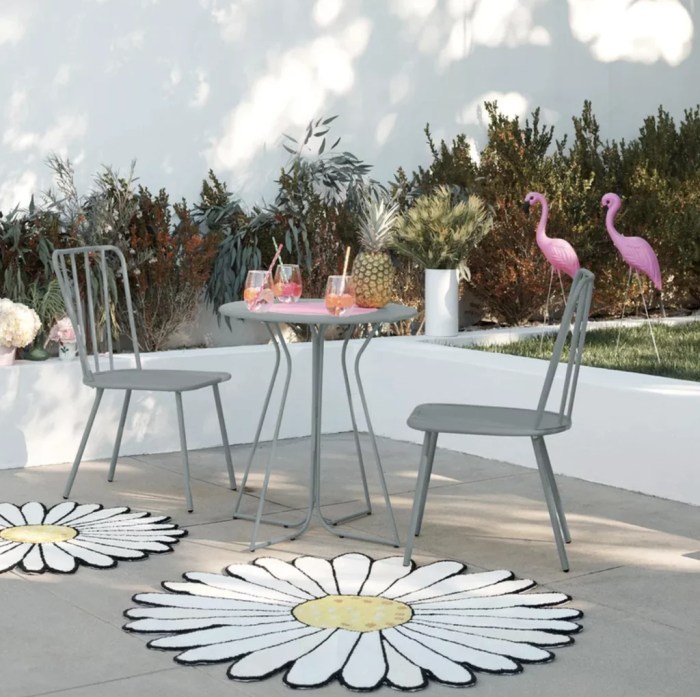
Source: popsugar-assets.com
Commercial outdoor furniture, unlike its residential counterpart, faces significantly harsher conditions. Its longevity and continued functionality are directly tied to its ability to withstand elements like rain, sun, wind, and potential vandalism. Careful selection of materials, appropriate maintenance, and proper storage are crucial to maximizing the lifespan and value of these investments.
Importance of Durability and Weather Resistance
Commercial outdoor furniture must endure consistent exposure to the elements. High-quality materials are essential for resisting fading, warping, and structural damage. This resilience minimizes the need for frequent replacements, reducing operational costs and environmental impact. The durability of the furniture also affects the perception of the business and its brand image. Customers and clients are more likely to associate a business with professionalism and long-term value when its outdoor spaces are equipped with robust and weather-resistant furniture.
Maintenance Strategies for Different Materials
Various materials have unique maintenance requirements. Wood, for example, often necessitates sealing and refinishing to protect it from moisture and decay. Metal furniture typically requires regular cleaning to prevent rust and corrosion. Polypropylene and other synthetic materials are generally more resistant to the elements but may still require occasional cleaning and protection from extreme weather conditions.
Cleaning, Protecting, and Storing Commercial Outdoor Furniture
Regular cleaning is paramount for maintaining the aesthetic appeal and functionality of outdoor furniture. Use mild detergents and soft-bristled brushes for cleaning. Thorough rinsing is essential to prevent residue buildup. Protecting furniture from harsh weather is crucial. Outdoor covers, or appropriate shelter during extreme weather, can prevent damage. Storage is equally important. Proper storage solutions should keep furniture off the ground, preventing moisture damage and pests. Protecting furniture from dust and debris is essential. Consider storing furniture under cover or in a designated area away from direct sunlight and rain.
Proper Storage Solutions
Proper storage significantly extends the lifespan of commercial outdoor furniture. Furniture should be stored off the ground to prevent moisture damage and pest infestation. Using appropriate covers and protective materials is crucial. For example, using breathable covers to prevent mildew and mold. Proper stacking and organization are key to minimizing damage during storage. The use of protective padding or dividers between pieces can also prevent scratches and dents.
Summary of Maintenance Requirements
| Material | Set Type | Cleaning | Protection | Storage | Estimated Annual Maintenance Cost (USD) |
|---|---|---|---|---|---|
| Wood | Dining Sets | Regular washing with mild soap and water, periodic sealing | Use of waterproof covers, UV protection treatments | Covered storage area, pallets with spacers | $50-$200 |
| Aluminum | Lounge Sets | Regular hosing with mild detergent, occasional power washing | Anti-rust treatments, outdoor covers | Covered storage area, padded supports | $25-$150 |
| Polypropylene | Tables and Chairs | Regular hosing, occasional use of mild detergent | UV-resistant covers, occasional wax treatments | Covered storage area, stacking with padding | $10-$75 |
Note: Costs are estimates and may vary based on specific material, set size, and maintenance frequency.
Applications and Use Cases: Commercial Outdoor Furniture Sets
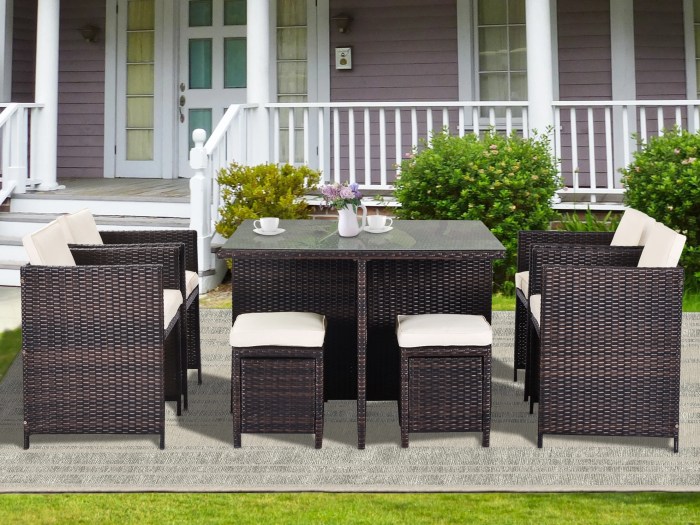
Source: walmartimages.com
Commercial outdoor furniture sets are not simply decorative additions; they are integral components of various business environments, enhancing customer experience and operational efficiency. Proper selection and strategic placement directly influence the success of outdoor spaces, making them productive and engaging for patrons.
From bustling cafes to tranquil resort areas, these sets offer versatility in design and function, catering to diverse needs and preferences. Understanding the specific use case is crucial for choosing the ideal furniture solution, maximizing the potential of the outdoor space and aligning it with the overall business strategy.
Diverse Applications
Commercial outdoor furniture is adaptable to a wide array of applications. These sets are utilized in restaurants, hotels, resorts, cafes, bars, and entertainment venues. The design, materials, and construction directly impact the suitability for different environments. For example, a durable, weather-resistant set is better suited for a busy beachfront restaurant, while a more aesthetically pleasing set might be preferable for a sophisticated rooftop bar.
Business Setting Examples
Consider a bustling outdoor café. The furniture sets must withstand high traffic and potential spills. Durable materials, such as aluminum or teak, combined with sturdy construction, are essential. Similarly, a resort setting might require a combination of lounging and dining furniture, offering different seating options to cater to varying customer needs. This includes comfortable chairs and tables for relaxation and dining, and possibly larger seating areas for groups. These elements are crucial for maximizing comfort and enhancing the overall experience for guests.
Importance of Sizing and Layout, Commercial outdoor furniture sets
Proper sizing and layout are critical for creating a welcoming and functional outdoor space. Overcrowding can detract from the customer experience, while insufficient seating may lead to long wait times. Careful consideration of traffic flow, accessibility, and the desired ambiance is vital. For instance, a spacious outdoor area in a hotel might accommodate various seating configurations for different activities, such as a relaxation area with comfortable sofas and a dining area with bistro sets. Strategic placement of furniture and pathways enhances the overall aesthetic appeal and usability of the space.
Impact on Customer Experience
The choice of furniture directly impacts the customer experience. High-quality, comfortable furniture fosters a sense of relaxation and well-being. Comfortable seating, appropriate table heights, and the overall aesthetic contribute to a positive impression. A well-designed outdoor space encourages longer stays and repeat visits. For example, a restaurant with inviting outdoor seating will likely attract more customers and increase sales compared to a restaurant with poorly designed or uncomfortable seating.
Furniture Selection Table
| Business Type | Suggested Furniture Sets | Considerations |
|---|---|---|
| Restaurant | Durable, weather-resistant sets with comfortable seating and ample tables; bistro sets for smaller spaces. | High traffic, potential spills, and long-term use. |
| Hotel/Resort | Combination of lounging and dining furniture; comfortable chairs and tables, and larger seating areas for groups; high-quality materials. | Comfort, accessibility, and multiple use cases. |
| Cafe | Durable, stackable chairs and tables; easy-to-clean materials. | High turnover, potential for spills, and quick setup/breakdown. |
| Bar/Lounge | Stylish, comfortable seating; modular and flexible layouts. | Creating a specific ambiance, potentially including high-top tables. |
| Entertainment Venue | Large seating areas, outdoor stages, and durable picnic tables. | Creating an open and inviting space, accommodating large groups, and providing flexible arrangements. |
Considerations for Purchasing Commercial Outdoor Furniture Sets
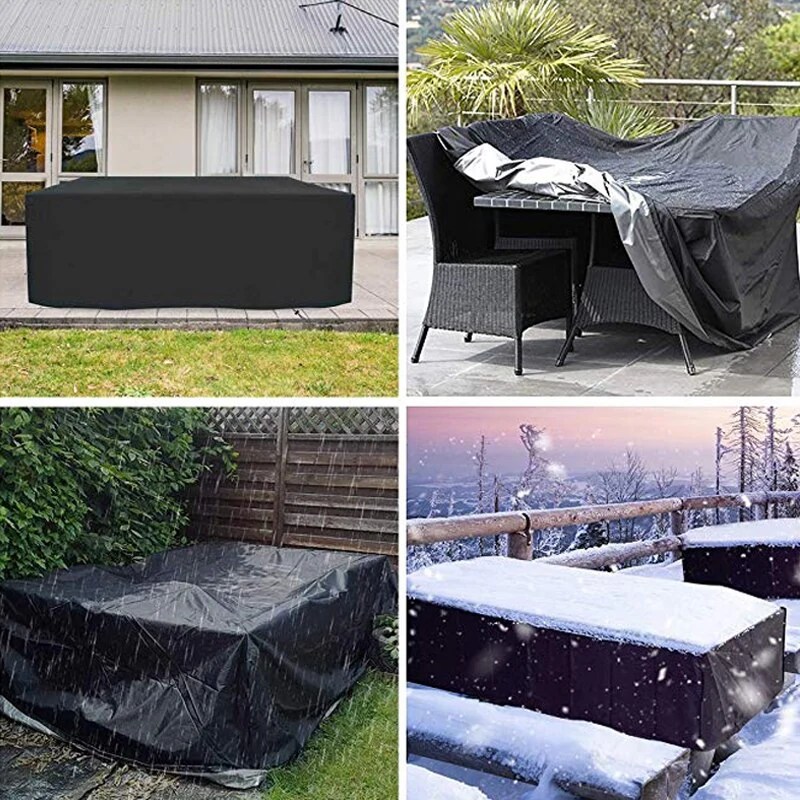
Source: comfycovers.net
Selecting the right commercial outdoor furniture requires careful consideration of various factors to ensure longevity, suitability for the intended use, and optimal return on investment. A well-informed decision process can significantly impact the overall success of the outdoor space.
Budgetary Constraints
Budgetary limitations are a primary concern when purchasing commercial outdoor furniture. A comprehensive budget analysis is essential to determine the financial resources available for the project. This involves considering the initial purchase price, potential installation costs, and any future maintenance expenses. Realistic budgeting ensures that the chosen furniture aligns with financial goals and avoids overspending.
Durability and Material Selection
The durability of the furniture is paramount for commercial applications. Factors like material composition, construction methods, and weather resistance directly impact the lifespan of the furniture. High-quality materials such as weather-resistant hardwoods, aluminum, or composite materials are critical for enduring outdoor use. Robust construction techniques, including reinforced frames and strong joints, further enhance longevity.
Style and Aesthetics
Matching the furniture’s aesthetic with the overall design and ambiance of the outdoor space is crucial. The style of the furniture should complement the intended use and attract customers or patrons. Consider factors like color palettes, patterns, and the overall design language to create a cohesive and visually appealing environment.
Maintenance Requirements
The ease and cost of maintaining the furniture are essential considerations. Some materials require more frequent cleaning or specialized treatments. A clear understanding of the maintenance schedule is necessary to ensure the furniture remains in good condition. Easy-to-clean surfaces and weather-resistant coatings can significantly reduce maintenance efforts.
Warranty and Return Policies
Thorough evaluation of warranty and return policies is vital. A robust warranty protects against manufacturing defects or premature wear. A clear return policy ensures flexibility in case of issues or dissatisfaction with the purchase. The warranty period and terms should be carefully reviewed before making a purchase.
Reputable Suppliers and Manufacturers
Selecting reputable suppliers and manufacturers is crucial. Thorough research and validation of the supplier’s reputation and experience are key to ensuring product quality and timely delivery. Seek reviews and testimonials from previous clients to assess the reliability and customer service of the provider. Examples of reputable suppliers include [Name of Supplier 1], [Name of Supplier 2], and [Name of Supplier 3].
Table: Important Considerations for Purchasing Commercial Outdoor Furniture Sets
| Consideration | Description | Budget Range (USD) |
|---|---|---|
| Material | High-quality, weather-resistant materials (e.g., hardwoods, aluminum, composites) | $500 – $50,000+ |
| Durability | Robust construction, reinforced frames, and strong joints | $500 – $50,000+ |
| Style | Aesthetic alignment with the overall design and ambiance | $500 – $50,000+ |
| Maintenance | Ease of cleaning and maintenance requirements | $500 – $50,000+ |
| Warranty | Comprehensive warranty covering manufacturing defects | $500 – $50,000+ |
| Supplier Reputation | Reputable suppliers with proven track records | $500 – $50,000+ |
Note: Budget ranges are estimates and may vary based on specific product features, quantity, and customization.
Final Review
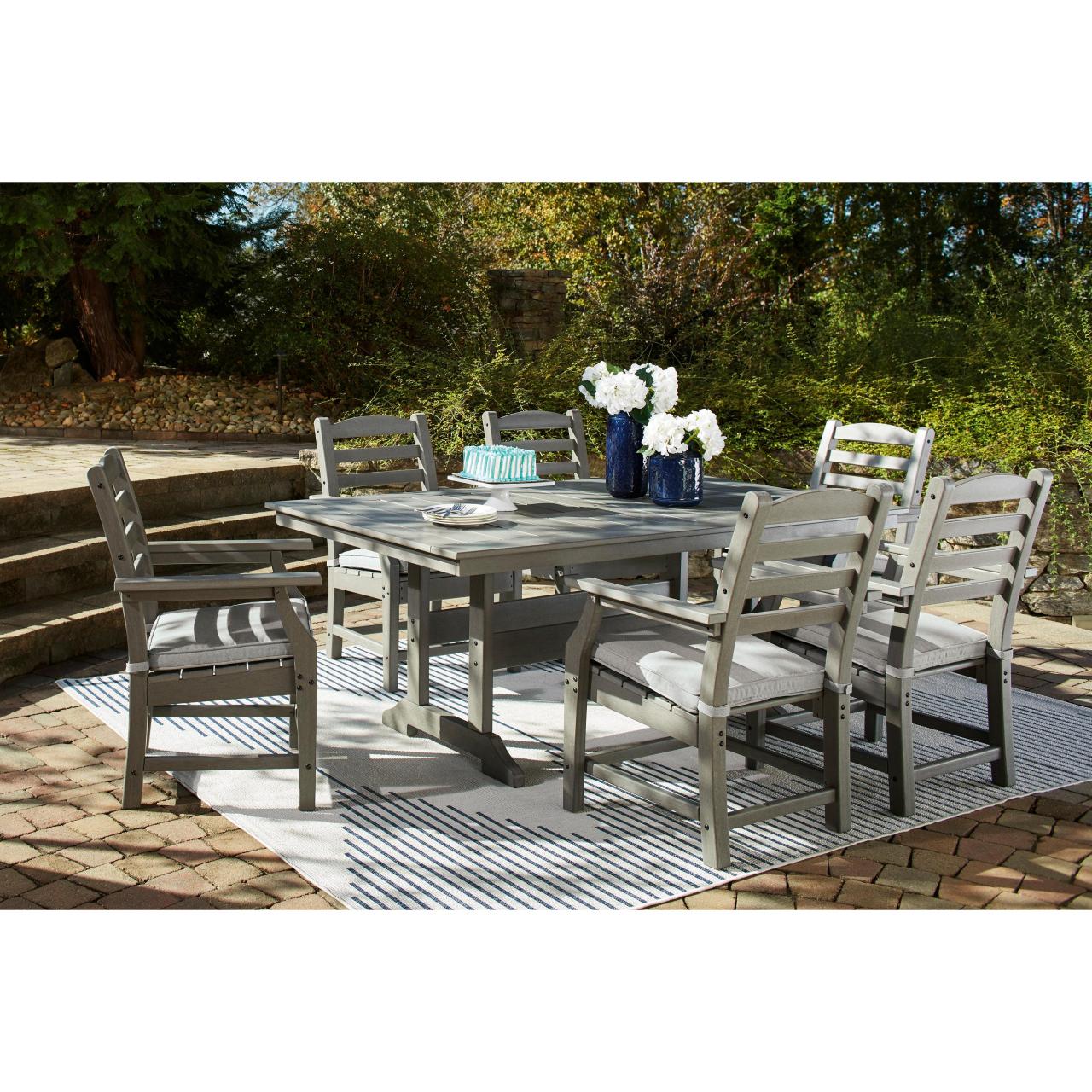
Source: casagrandefurniture.com
In conclusion, choosing the right commercial outdoor furniture sets is a strategic investment that significantly impacts a business’s success. This guide has highlighted the importance of considering durability, design, maintenance, and practical applications. By carefully evaluating these factors, businesses can create inviting and functional outdoor spaces that enhance the customer experience and contribute to their overall brand image. Remember to always prioritize the longevity and suitability of the furniture to its intended use and environment.



